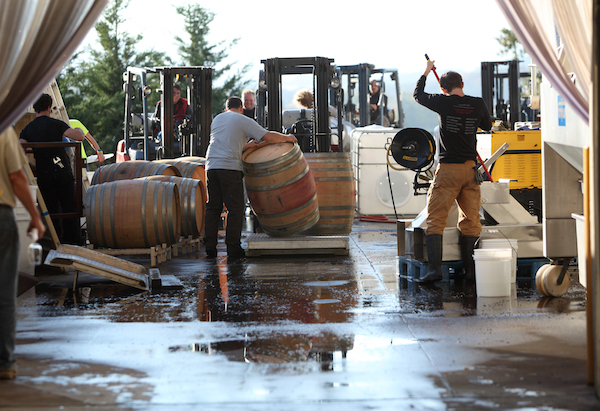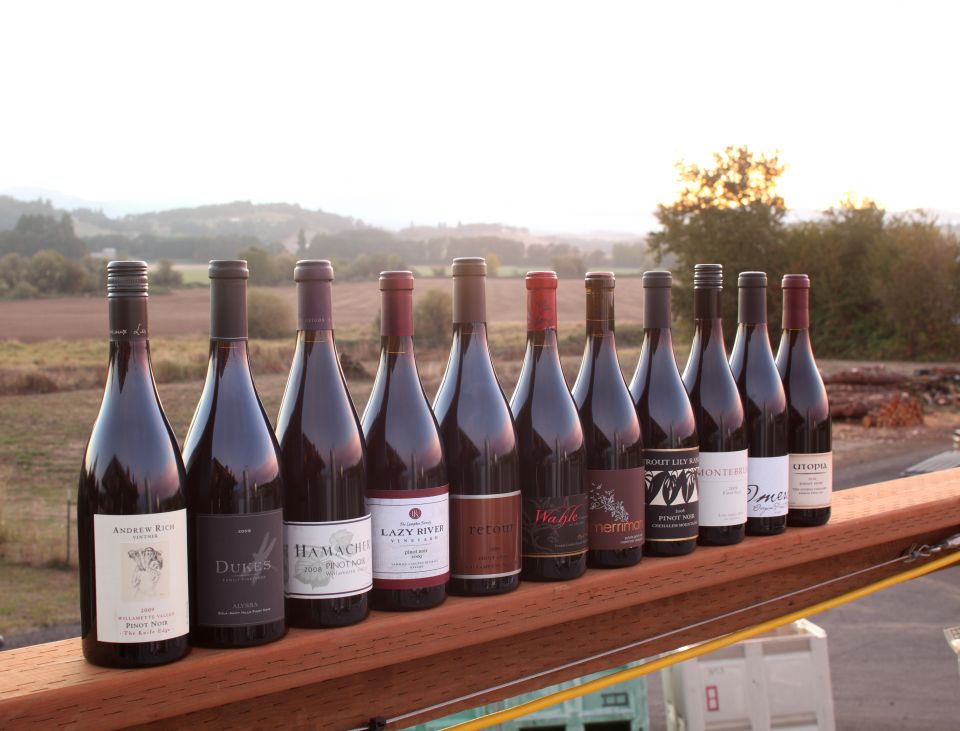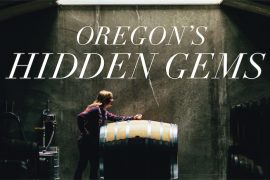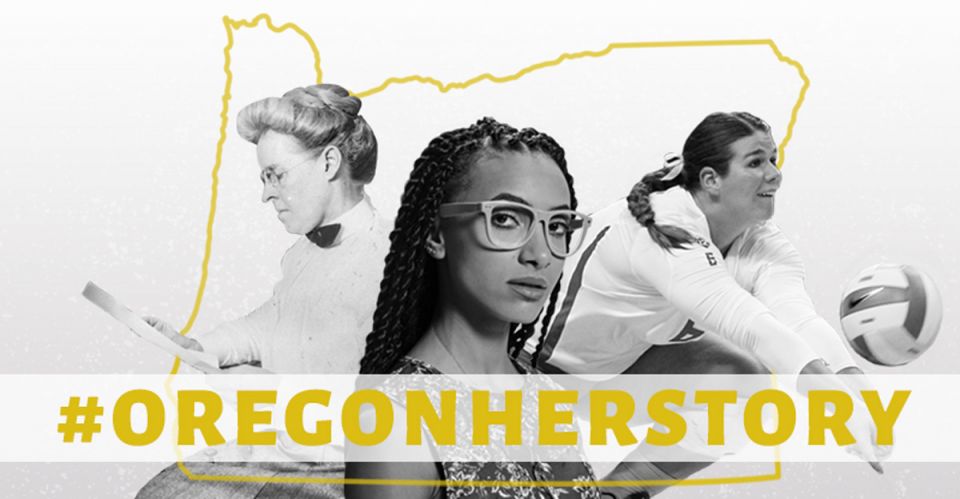written by Anna Bird
Oregon’s wine industry was built on collaboration and community. In the formative years after prohibition, when the winemaking pioneers first laid eyes on Oregon’s cold, wet soil, they had to stick together. The small communities in the Willamette Valley and Southern Oregon looked to each other for inspiration, ideas and innovation in this brand new territory.
Now the wine industry is a $3.35 billion industry, adding 17,000 wine-related jobs to the workforce and paying $527 million in wages. As a local economic force with an international reputation for producing high-quality wines, the success of Oregon’s wine industry still depends on the collaborative spirit that helped launch it. One way wine producers are keeping this tradition alive is working in shared facilities under one roof, where they can benefit economically and creatively.
At Southeast Wine Collective, Portland vintners from small, up-and-coming wineries share collaborative production facilities and present their wines alongside guest vintages and gastronomical delights in the tasting room. The collective opened in 2011 as a venue for like-minded, urban winemakers looking to try new things and push the envelope. In 2012, one of the collective’s tenants was Bow & Arrow, a winery owned by husband and wife, Scott and Dana Frank, who were able to launch their wine at Southeast Wine Collective. 
Now they are making their mark with a Loire Valley- inspired pinot noir made from an underground winery in The Bindery building in northeast Portland.
Southwest of Portland, Carlton Winemakers Studio offers vintners an innovative, environmentally conscious co-op facility in historic Carlton. The studio was founded by Eric Hamacher and his wife, Louisa Ponzi of Ponzi Vineyards, along with Ned and Kirsten Lumpkin of Lazy River Vineyard. They came together around the idea to build a sustainable winery, where multiple, small-volume wine producers could have access to efficient, state-of-the-art equipment. Today, fourteen artisanal vintners work independently under one roof in the 15,000-square foot, gravity-flow winery. A shared tasting room allows visitors to sample each of the different labels in one place.
In a repurposed 1950s walnut processing plant, winemakers from different labels share a collaborative space at Walnut City WineWorks in McMinnville. The town is a hub for Oregon wine touring, and Walnut City WineWorks is a one-stop shop where visitors can take in a number of Willamette Valley appellations, along with the wines produced there. Much like the Southeast Wine Collective and Carlton Winemakers Studio, Walnut City WineWorks provides winemakers an opportunity to produce wines without the huge overhead of individual production facilities. Unlike other cooperatives, however, Walnut City WineWorks staff also help farm and manage their tenant’s vineyard sites.
Making wine in Oregon is no longer new territory, but with a growing number of wineries in the market every year, wine producers, large and small, recognize the benefits of working together. The basis for success in Oregon wine country was a community of forward-thinking collaborating for a greater good. Winemaking co-ops perfectly embody this spirit in today’s industry.







